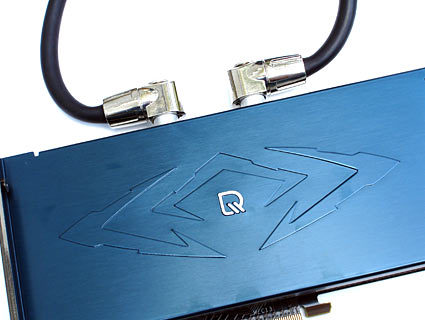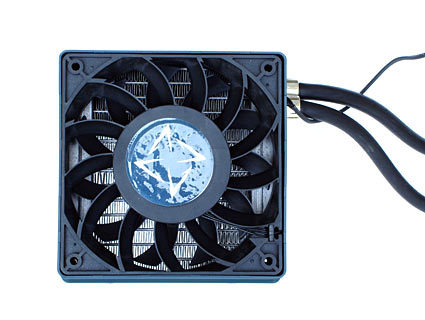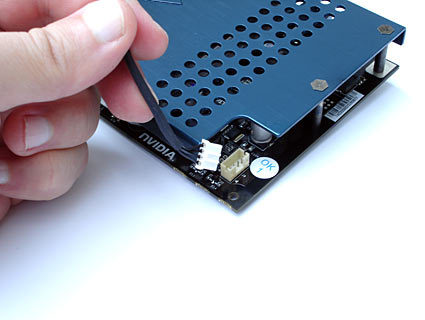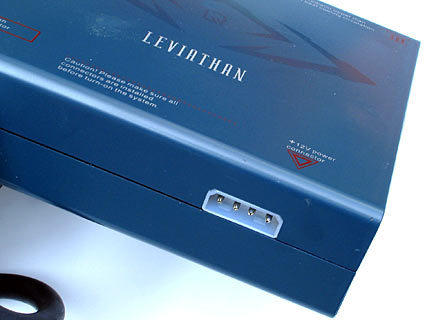Leadtek's $900 Performance Leviathan
A Cool Cooler?
The hoses can swivel almost all the way around until the hose from one hits the top of the other.
The cooler comprises a water block, hoses and a radiator with a pump. The water block fits into a standard 8800 Ultra PCB meaning that the card is just as long as all of the other Ultra variants. However, you will need a special case for this card.
Not only does the case have to be sufficiently deep to fit the long card, but it must have a 120 mm exhaust fan housing on the back wall as well.
If your case meets the criteria for this card and cooler combo, the radiator and pump housing is easy to install. The fan is quiet and you will not hear bubbles in the system as long as the long part of the radiator is on top. If it is mounted or positioned on its side you will hear the gas and fluids gurgling after a while.
The hoses come installed on the graphics card right out of the box. This is a benefit if you plan on running your system with a single card. However, there is no option to have two cards running off the same cooling system. If you wished to run SLI, then you have to buy a second Ultra and cool it via air or another means. Purchasing another Leviathan means you would have to provide an additional 120 mm opening for the second cooler. When we asked Leadtek about a dual-card system at Computex, they said they only had them for demonstration purposes.
There are four connections that need to be made during installation. The obvious two are the six-pin power connections to the graphics card. There is a separate four-pin connection for the cooler's pump. The last connection is a link between the graphics card and the radiator's fan. This allows the graphics card to control the fan as the cooling needs demand.
For more extreme scenarios, we first wanted to see what happens when the power to the pump turns off or comes unplugged. Because the coolant is a fluid, there was some heat transfer up the hose. The card actually was able to operate for almost 20 minutes with the pump turned off. The hose and cooler got extremely hot but when the pump was powered up again it only took a couple of minutes to cool off the card again.
Get Tom's Hardware's best news and in-depth reviews, straight to your inbox.
We then ran the card in a room in which the ambient temperature was 85 degrees Fahrenheit for one hour. The card worked fine as should any water- or air-cooling system. Of course, the lower the ambient temperature in the room, the cooler the card's running temperature (high school physics and Carnot come to mind). In both cases, we were impressed with how well it did. We do not recommend that you try this out on your own, but these tests give some piece of mind if something should happen when moving the case around or during a very hot summer day without air conditioning.
Current page: A Cool Cooler?
Prev Page A $900 Graphics Card Next Page Beside Warranties, What Else Comes In The Box?


